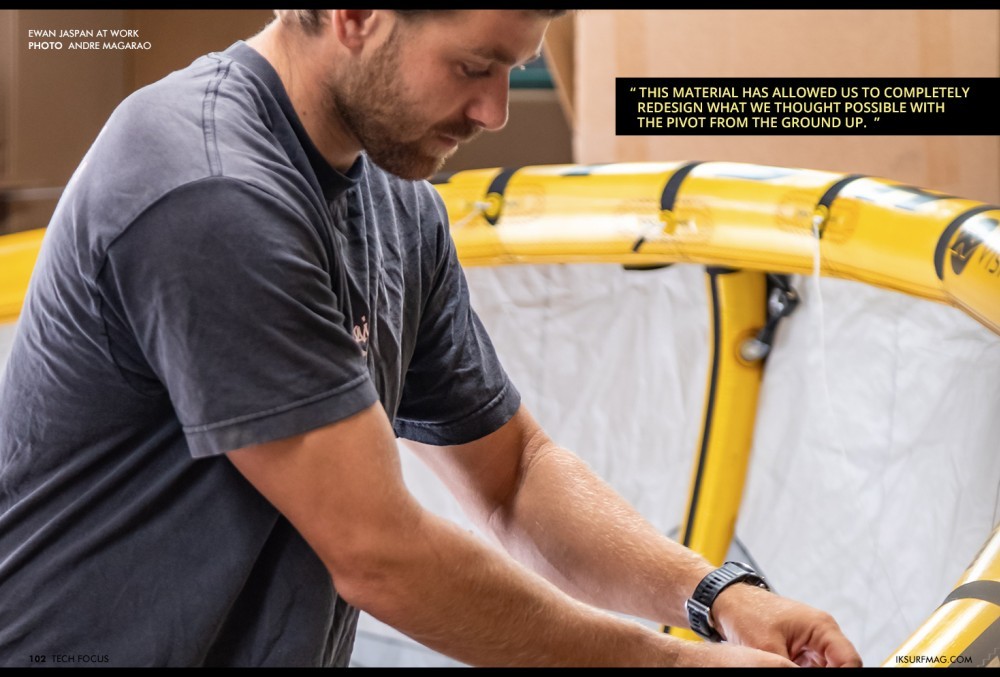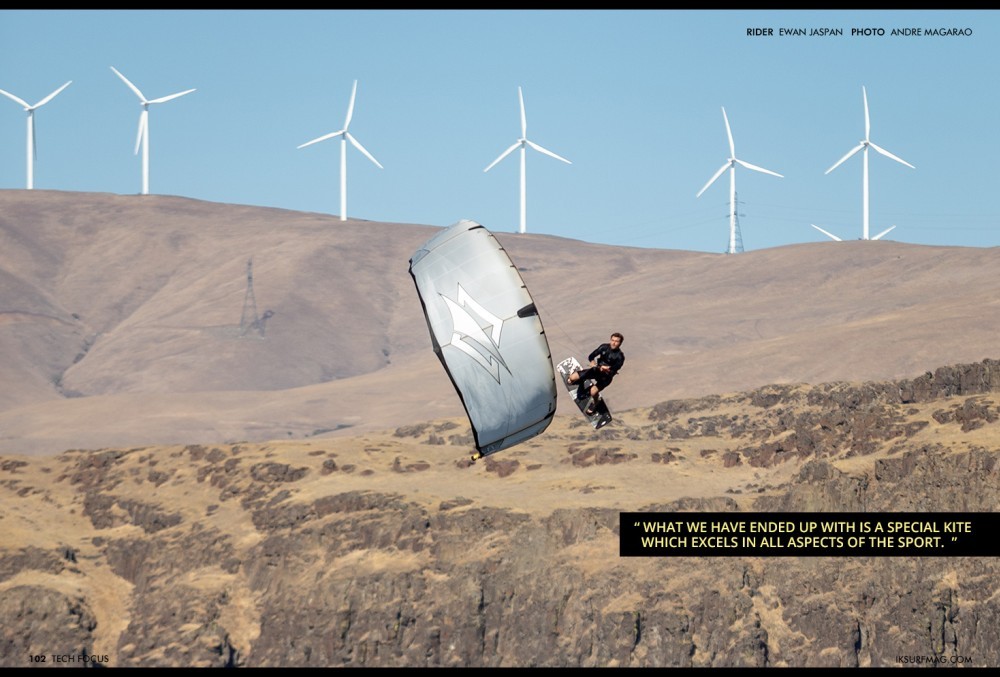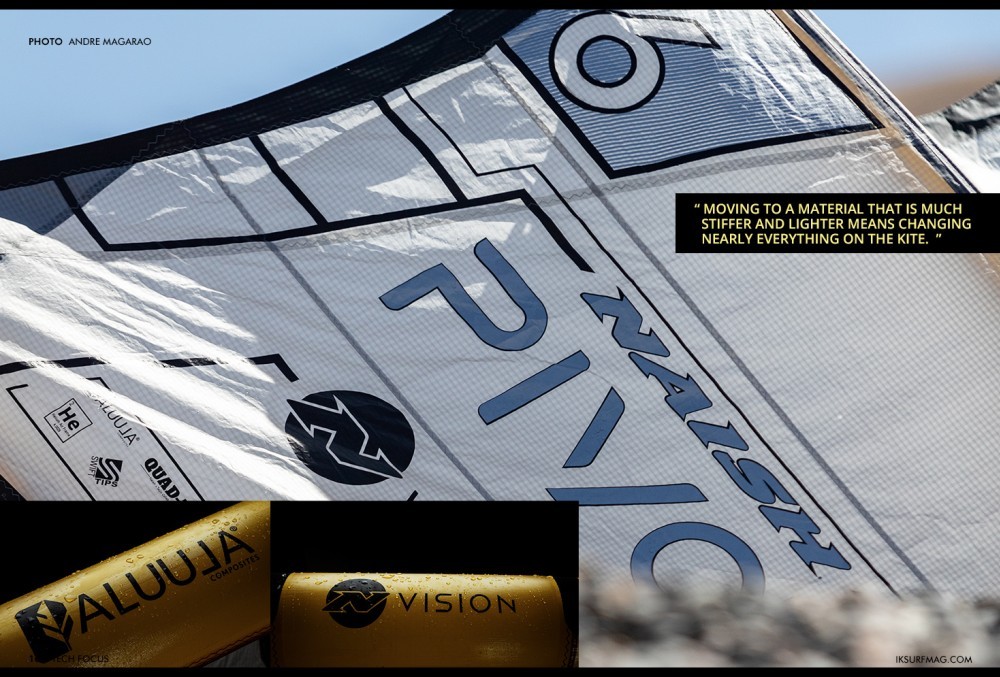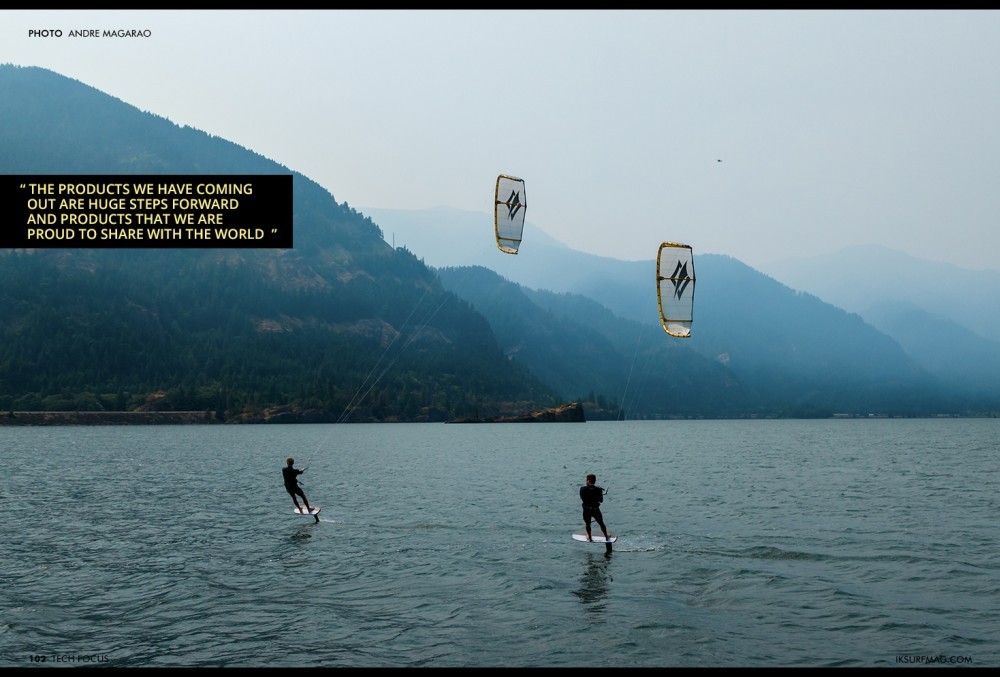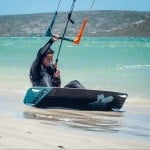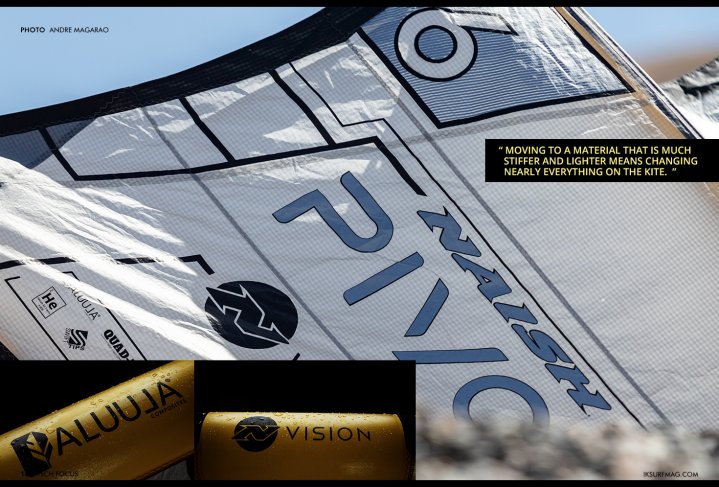
Tech Focus: Naish Pivot NVision
Issue 102 / Thu 14th Dec, 2023
The future is looking golden for the team at Naish with the recent launch of the new Pivot NVision, the first Aluula airframe kite in their range! In this Q&A, Kite Designer Ewan Jaspan gives us some great insights into this product and the latest developments at Naish!
Ewan, congrats on this exciting new release! Give us a short and sweet summary of the all-new Naish Pivot Nvision! What are the key features, and how does it feel to fly?
Thanks! It has been a great team effort here at Naish to bring out our first NVision product. Learning a new material, along with having the opportunity to create a Pivot, unlike (but still alike) anything we have tried previously, has been rewarding and exciting.
Obviously, the main key feature is the super lightweight Aluula GC-82 airframe, which we call the Helium Airframe. This material has allowed us to completely redesign what we thought possible with the Pivot from the ground up. The main thing you will notice upon launching the kite is the crisp and light bar feel, which translates into a kite that is more intuitive than ever before. User input is translated directly into kite flight, and the kite is where you want it to be faster than ever before.
One of the benefits of a Naish NVision Aluula kite compared to other brands using Aluula is, for sure, the Quadtex Canopy. Quadtex is the stiffest canopy on the market and perfectly aligned with the extremely stiff Aluula; that makes the kite like a blade, whereas others with a softer canopy will have overstretching of the canopy.
What are the most notable differences between the original Naish Pivot model and the Naish Pivot Nvision?
Riding-wise, we aimed to pin the Pivot NVision towards the same flying attributes as the Pivot, just taking everything to its limit. The kite flies faster forwards, turns quicker immediately and is lighter in the sky, meaning in light winds, it holds in the air much better, and in stronger winds, you have a kite which recovers quicker from loops and has a more vertical lift spike on take off.
With all of this, you would expect a kite which does not have great drift, but this is not the case with the NVision Pivot. With the leading edge being so much lighter, the center of weight has shifted back to be more in line with the center of effort, meaning you have a kite which can drift in a balanced position when unloaded but drive forward when loaded, something you are not able to achieve with standard dacron materials.
How excited were you to work with the superlight Aluula material on this project?
At first, quite a few years back now, we were a little skeptical about the material and how much benefit the user could actually experience. After our first prototypes, where all we did was substitute Aluula into our existing designs, we were met with a kite which was stiff and hard to use. From there, we began exploring and experimenting with all the different profiles and dimensions you can access with the Aluula, and the kite started coming to life in ways we never thought possible. This is when the excitement began. From there, we have worked on so many different prototypes and samples to perfect the kite and balance it ideally with the GC-82. What we have ended up with is a special kite which excels in all aspects of the sport.
Did you have any challenges working with the Aluula material during the design and testing phase?
At first, it was just all about understanding the behavior of the new material. The industry has been using similar style materials for many years, and we know the properties of this well. Moving to a material that is much stiffer and lighter means changing nearly everything on the kite. Working past that, our next challenge was creating a closing seam which could stand up over time. One of the issues with Aluula is that it is not as tight a weave as regular dacron, as a lot of the strength and stiffness comes from the laminate. What this means is that it does not hold a thread as well, and we had to develop new seams that could match the strength of the material itself. At Naish, we now have an Aluula closing seam, which is stronger than the material itself and stronger than any other Aluula kite or wing on the market, which is something we are incredibly proud of.
There have been additional design inputs on the Pivot Nvision, including on the wingtips and bladder caps. Please tell us more about these changes and why they were made.
The new bladder cap construction was developed to deal with the higher PSI we inflate the kites to now, but it is also a great upgrade, which is now across the board on all of our upcoming kites. It is basically a more even pressure spread on the end of the bladder and wingtip, with the velcro being placed in a new orientation to provide more hold. The Swift tips are also a lighter and stronger way to sandwich in the back line connection points. This provides the kite with a more responsive and lighter wingtip, where we utilize the incredible strength of our Quadtex Canopy material instead of heavier dacron.
While you're relatively new to the design team, you've already made a big impact on the recent products coming from Naish. You've also been on the Naish team as an athlete since the start of your professional career! What is it like working with a brand with so much history in the sport?
Working with Naish, for me, just feels right. It is the company I have loved and been involved with since the beginning of my career. I was 14 years old when I began riding for Naish, and I have always looked up to the team and Robby throughout this whole time, as I still do. Some of the staff still around Naish have been there since the early days as well, so leaning on their experience and knowledge is priceless, and helps me learn more as well. We have a great balance now of experience and fresh young energy in the R&D department, as well as broader testing locations. The main R&D hub is still on Maui, but in Hood River, we now have Brandon Scheid and I, who will work based here, being able to easily travel to Maui. Between this broad spread of conditions, our products will get more well rounded and more time tested, to produce quality to lead the market. Super exciting times.
With the recent adoption into the Kubus Sports NL family, what has changed for you and the team? Does their future vision support your goals as a designer?
Their future vision is really product focused, which, as a designer, is exactly what you want. We have been pushed and challenged since day one to make innovative products. The NVision project was put into overdrive from the start, and the outcome is now beginning to show. The products we have coming out are huge steps forward and products that we are proud to share with the world. Moving into the future, our new partnership/team is super motivated to increase market share and create a brand which continues to be a true market leader. Their goals don't stop just at product, though; we are building great new marketing strategies and revitalizing our sales teams globally, which are all equally important pieces of the ever-complicated puzzle that is running a wind/watersports brand.
What's coming next from you and the development team at Naish? Any secrets you can let us in on? 😉
The NVision range will continue to grow and develop. NVision will be our range of products, which will give you a glimpse into the future and show what we are capable of in terms of performance products. Our next products releasing in January are exactly this, and we won't stop there. The great thing about this range is that it is like Formula 1, where the top end helps create new benefits and technology, which flow on into the rest of the Naish product line, helping bring all of our equipment to new heights.
Videos
By Crystal Veness
Editor at IKSURFMAG, Crystal Veness hails from Canada but is based in South Africa. When she isn't busy kitesurfing or reporting on the latest industry news for the mag, she is kicking back somewhere at a windy kite beach or working on creative media projects.




